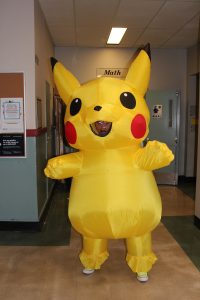Max van Manen and Phenomenology
Biography
Born in the Netherlands in 1942, Max van Manen received his teaching qualifications before emigrating to Canada and to Edmonton, Alberta in 1967, at 25 years of age. He taught in the Edmonton Public School system and continued with post-graduate study, receiving his MEd in 1971, and PhD in 1973 in the Faculty of Education at the University of Alberta in Edmonton. He married and became a Canadian citizen also in 1973.
Professionally, Dr. Van Manen is now a professor emeritus, having retired in 2008 after 35 years from his three years at the University of Toronto from 1973-76, and at the University of Alberta from 1976-2008. He also was directly connected to UVic in the 1980s and 90s as a visiting professor, teaching the summer graduate program in the Faculty of Education.
Dr. van Manen’s focus on phenomenology continued in some form for the rest of his research career. He began with the idea of researching “lived experience.” The next phase was marked by a focus on pedagogical reflections, thoughtfulness and tact, linking the practice of research and the practice of writing. Phase three focused on identity and inwardness through the process of writing. This led to the culmination of his focus, which was the phenomenology of writing. The last two phases maintained the writing focus, but turned towards the burgeoning world of the internet and the new “world” of writing, and the “The unsuspected power of written words, in virtual space, to create complex and meaningful interpersonal relations,” (https://www.maxvanmanen.com/biography/).
What is phenomenology?
Phenomenology is a philosophical term that aims to describe behaviour in the now, as lived experience. It does not seek to look for cause or to have preconceptions but to examine the human experience as it is. When there is interpretation of that “phenomena” it becomes hermeneutic phenomenology, and when it is descriptive, it is transcendental phenomenology.
How might this look in more concrete terms?
Phenomenological methodology relies mostly on interviews with participants. The type of research question would be asking what the participant’s experience is with the topic being studied as it can be determined through the responses to the interview, or through looking at what is written down, like in a blog or tweet.
In our chat with, and readings of, George Veletsianos, we might see his article, “Women scholars’ experiences with online harassment and abuse: Self-protection, resistance, acceptance, and self-blame,” (Veletsianos, Houlden, Hodson, & Gosse, 2006) as an example of phenomenological methodology. He was examining the experience of online harassment of female scholars through interviews. This qualitative study also used few participants, another aspect of phenomenological research. Importance is placed not on whether there is a change in behaviour or how different variables affect the outcome of the participants’ behaviour, but rather, to discover what themes might be extrapolated from the interviews as an examination of the participants’ experience with harassment.
Chosen research article:
School Climate and Academic Achievement in Middle and High School Students
Shay M. Daily, PhD, MPH, MCHES Michael J.Mann, PhD Alfgeir L. Kristjansson, PhD Megan L. Smith, PhD Keith J. Zullig,MSPH, PhD,FAAHB, FASHA
This study focused on a large sample (n=2405) of students whose academic achievement, measured by self-reported grades in the previous year’s Math and English courses, was compared with their level of school climate, using the School Climate Measure (SCM). The SCM is reported to have validity, “across several geographically diverse populations, including important demographic characteristics such as students age, sex, race, grade-level, ethnicity, and self-reported grade point average (GPA)” (Zullig KJ, Collins R, Ghani N, et al., 2015).
As stated, the purpose of the study was, “to determine the associations between the SCM domains and academic achievement among middle and high school students” (Daily, Mann, Kristjansson, Smith, & Zullig, 2019). The hypotheses were there would be a significant association with the SCM domains and academic achievement, although a difference would occur between middle and high school students, and secondly, that Non-academic factors, including biological sex, mother’s education, and family structure would significantly interact with achievement.
In collecting the data, students anonymously filled out a 262-item questionnaire which took 30-45 minutes to complete. Students were free to answer all or part of the survey, and to opt out at any time.
In discussing the results of the study, the data analysis suggested that middle and high school students who reported positive levels of school climate also reported higher academic performance. The highest factor of the SCM domains for both middle and high school students was Academic Support.
In pointing out the study’s limitations, there was acknowledgement that the schools’ demographic populations were predominantly white, and that the data on grades was self-reported, which may contain recall bias.
Concluding remarks focused on a breakdown of the discrete domains of the SCM to better see how individually identified factors such as Academic Support can better serve students in achieving higher academic success.
Phenomenological approach to this study: How and Why would it look different?
From a phenomenological perspective, the research question that the chosen article asks would change from, “Is there a connection between school climate and academic achievement in middle and high school students?” to, “What are your middle and high school experiences regarding school climate?” The data to be collected would shift from the predetermined SCM domains to an examination of the themes that result from the participants answering the question. This shift is a result of the phenomenological perspective of examining the lived experience; that is, the students’ experience with school climate. The results of the themes or factors that can be isolated can then be checked for correlation to academic achievement post hoc.
Changes
For the researcher – in the original study, the researchers hypothesize that there would be a positive correlation between school climate and academic achievement based on the School Climate Measure and self-reported grades in English and Math.
The phenomenological researcher – the phenomenological researcher must not be looking for cause or come with preconceptions about the outcome. It is in the interpretation of the data about the students’ experience that the researcher analyzes.
For the research – the original research, while trying to determine factors predetermined by the School Climate Measure, also looked at three predetermined non-academic factors of biological sex, mother’s education, and family structure. As a quantitative study, emphasis is on whether factors are statistically significant, and by how much.
Phenomenological research is qualitative in that it describes rather than quantifies, so this study would not be able to process 2405 participants’ responses. The number of participants would need to decrease down to ten to twenty since it would be likely that patterns would emerge at that point which would make further interviews redundant. As well, as the questioning would be more open-ended, a phenomenological approach would not likely result in easily categorized responses.
For the researched – the original participants were given much leeway in the completion of the questionnaire in that they did not have to answer all the questions and could opt out at any time. With a 262-item questionnaire, the types of questions would likely not require much depth of thoughtfulness in response or it would take hours instead of the 30-45 minutes in the study.
The Researched in a phenomenological setting would remain as the demographic but the type of engagement in the gathering of data would require participants who would need to respond with thought and care. Questions would be fewer, but responses would be longer.
For the reader – the original article would, as the authors stated, be useful for policy makers in determining how to allocate funds to improve school climate to address academic achievement. As well, for stakeholders such as teachers, students and parents, the results may guide practice for teachers, guide student involvement in school affairs, and guide parents in encouraging their children’s connection to the school.
Phenomenologically, the same readers would benefit, from the policy makers to the stakeholders, but as the information would not easily be transferable, the interpretation for this group of participants may not look the same for another group in another part of the country or different ethnic, economic, gender, or other defining feature of the group.
Questions/Insights
What began as a struggle to conceptualize the term, “phenomenology,” only gained clarity as the writing of this assignment progressed. Many of the explanations of the term only seemed to wrap around themselves, with definitions like, “Phenomenology is the study of phenomena.” The best explanations tend to either bring the vocabulary down to lay terms or use real life examples that are relatable. Once I realized that I could use Dr. Veletsianos’s article from earlier in the class, it brought the term within reach.
At the same time, I still struggled with some of the examples and the research that Dr. van Manen used, especially as it pertained to online writing. I would need to immerse myself in the study or to watch the study being conducted (which is phenomenological in a way, as I observe the lived experience).
References
Daily, S. M., Mann, M. J., Kristjansson, A. L., Smith, M. L., & Zullig, K. J. (2019). School Climate and Academic Achievement in Middle and High
School Students. Journal of School Health, 89(3), 173–180. https://doi.org/10.1111/josh.12726
Manen, M. V. (2007). Phenomenology of Practice. Phenomenology & Practice, 1(1). https://doi.org/10.29173/pandpr19803
Phenomenology Methods & Data Collection Center for Innovation in Research and Teaching. (n.d.). Retrieved July 22, 2019, from
https://cirt.gcu.edu/research/developmentresources/research_ready/phenomenology/methods_data
Phenomenology Online » Hermeneutical Phenomenology. (n.d.). Retrieved July 22, 2019, from
https://www.phenomenologyonline.com/inquiry/orientations-in-phenomenology/hermeneutical-phenomenology/
Researching Lived Experience: Human Science for an Action Sensitive Pedagogy by Max van Manen, London, ON: Althouse Press, 1. (n.d.).
Retrieved July 22, 2019, from
https://webcache.googleusercontent.com/search?
q=cache:6DQHT015_gAJ:https://journals.library.ualberta.ca/pandp/index.php/pandp/article/view/15124/11945+&cd=2&hl=en&ct=
clnk&gl=ca
Van Manen, M., & Adams, C. (2009). The Phenomenology of Space in Writing Online. Educational Philosophy and Theory, 41(1), 10–21.
https://doi.org/10.1111/j.1469-5812.2008.00480.x
Veletsianos, G., Houlden, S., Hodson, J., & Gosse, C. (2018). Women scholars’ experiences with online harassment and abuse: Self-protection,
resistance, acceptance, and self-blame. New Media & Society, 20(12), 4689–4708. https://doi.org/10.1177/1461444818781324



Recent Comments